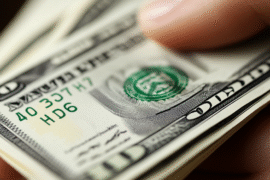This article may contain references to products or services from one or more of our advertisers or partners. We may receive compensation when you click on links to those products or services. Nonetheless, our opinions are our own.
The information presented in this article is accurate to the best of our knowledge at the time of publication. However, information is subject to change, and no guarantees are made about the continued accuracy or completeness of this content after its publication date.
Introduction
For over a century, Whirlpool has been a mainstay in American kitchens and laundry rooms, recognized for durable appliances and long brand equity. In 2025, the central shareholder debate will focus less on models and more on the company’s financial trajectory following a dividend cut and mixed earnings. This piece examines Whirlpool’s recent results, strategic moves, and the macro forces that determine whether WHR is a genuine value opportunity or a potential value trap. Readers will find an evidence-focused, SEO-ready overview designed to help both short-term and long-term investors assess the stock. The following sections summarize the sources and the most effective metrics.
Housing And Economic Outlook
The housing cycle, remodeling activity, and overall consumer confidence significantly influence Whirlpool’s sales performance and unit demand. As of mid-2025, the U.S. housing market shows uneven regional recovery with sluggish national growth, which weakens appliance demand. Remodeling and replacement purchases offer partial support, but new-home starts remain an important leading indicator for Whirlpool’s volumes. If housing activity staggers, WHR’s top line may continue to feel pressure until broader economic conditions normalize.
Q2 2025 Financial Performance
Whirlpool reported a quarter with revenue of about $3.77 billion and adjusted EPS near $1.34, both metrics falling short of many analyst expectations. GAAP EPS declined materially year-over-year, reflecting weaker operating results and some one-time impacts that compressed profitability. Free cash flow remained under strain in the first half of the year while the company pursued refinancing and liquidity measures to stabilize the balance sheet. These results motivated a cautious guidance update and triggered investor re-rating discussions across sell-side and buy-side analysts.
Dividend Cut And Strategic Impact
In mid-2025, Whirlpool reduced its annual dividend payout, a move intended to conserve cash for debt reduction and reinvestment while unsettling income-oriented shareholders. The cut improves near-term liquidity and allows management to prioritize deleveraging, but it also signals that free cash generation is currently insufficient to sustain previous payouts. For long-term investors, the change may be neutral or positive if the retained capital successfully reduces interest burdens and finances competitive investments. The market reaction has been mixed, reflecting differing investor horizons and risk tolerances.
Voted "Best Overall Budgeting App" by Forbes and WSJ
Monarch Money helps you budget, track spending, set goals, and plan your financial future—all in one app.
Get 50% OFF your first year with code MONARCHVIP
Competition, Tariffs, And Outlook
Competition from Samsung, LG, and other global brands remains intense, particularly in smart and feature-rich appliance segments where those rivals have invested heavily. Tariff policy and trade timing have created short-term distortions; competitors shipped inventory ahead of new duties, which pressured volumes and pricing in certain channels. Whirlpool’s comparatively large U.S. manufacturing footprint gives it structural advantages if tariffs remain or expand, but execution is required to translate that into market share gains. The company is pursuing cost reductions and product investments in smart and eco-friendly designs, and progress on those fronts will influence the outlook materially.
Bull vs. Bear Cases
- The outlook is bullish because debt reduction and cost-cutting could strengthen margins over time, tariffs may benefit domestic producers, and current share prices might already account for much of the bad news.
- Bearish, Continued revenue declines, negative free cash flow, a dividend reduction that undermines investor confidence, and competitors outpacing Whirlpool in innovation could continue to put pressure on the stock.
Investment Outlook
Over the short term (6–12 months), WHR looks prone to volatility given earnings weakness, guidance cuts, and investor sensitivity to dividend policy changes. Mid-term performance will hinge on whether housing and consumer demand meaningfully recover and whether Whirlpool can translate restructuring into sustainable cash flow. Over a longer horizon (3+ years), patient investors who believe in effective execution, continued deleveraging, and tariffs or policy tailwinds may find Whirlpool attractive. Ultimately, WHR is a conviction trade that requires monitoring of balance sheet progress and product execution.
FAQ
Why did Whirlpool cut its dividend in 2025?
The company reduced its dividend to free up cash for debt reduction and reinvestment in operations. Management prioritized liquidity and balance-sheet repair over maintaining prior payout levels. The move was intended to lower interest costs over time and to fund strategic initiatives that could improve competitiveness. Income investors viewed the reduction unfavorably, while some value investors saw the decision as conservative fiscal management.
How did Whirlpool perform in Q2 2025?
Whirlpool posted revenue of roughly $3.77 billion and adjusted EPS around $1.34, both below many analysts’ estimates for the quarter. GAAP EPS declined significantly year-over-year, reflecting weaker demand and margin compression. Management lowered near-term guidance and emphasized restructuring and cost control measures to stabilize results. The quarter highlighted the operational and macro headwinds the company faces heading into the remainder of the year.
Is Whirlpool undervalued right now?
Opinions diverge: some analysts view WHR as undervalued given discounted multiples and possible tariff benefits, while others warn the combination of weak demand and leverage makes the stock risky. The answer depends on timing, the housing recovery, and whether management’s cost actions restore consistent free cash flow. Investors should weigh balance-sheet improvements, dividend policy changes, and competitive positioning before concluding the stock is a buy. It remains a case where conviction in execution and macro improvement is required.
Closing Remarks
Whirlpool’s 2025 position mixes legacy strengths, brand recognition and U.S. manufacturing with contemporary challenges, including fierce competition, uneven housing demand, and stressed cash flow. Whether WHR is a value play or a value trap depends on execution: debt reduction, restructuring, and product innovation must produce measurable cash flow and margin improvement. This analysis summarizes the latest operational and financial signals to help readers make a reasoned choice about WHR.

Reviewed and edited by Albert Fang.
See a typo or want to suggest an edit/revision to the content? Use the contact us form to provide feedback.
At FangWallet, we value editorial integrity and open collaboration in curating quality content for readers to enjoy. Much appreciated for the assist.
Did you like our article and find it insightful? We encourage sharing the article link with family and friends to benefit as well - better yet, sharing on social media. Thank you for the support! 🍉
Article Title: Is Whirlpool a Value Trap or a Value Play in 2025?
https://fangwallet.com/2025/08/26/is-whirlpool-a-value-trap-or-a-value-play-in-2025/The FangWallet Promise
FangWallet is an editorially independent resource - founded on breaking down challenging financial concepts for anyone to understand since 2014. While we adhere to editorial integrity, note that this post may contain references to products from our partners.
The FangWallet promise is always to have your best interest in mind and be transparent and honest about the financial picture.
Become an Insider

Subscribe to get a free daily budget planner printable to help get your money on track!
Make passive money the right way. No spam.
Editorial Disclaimer: The editorial content on this page is not provided by any of the companies mentioned. The opinions expressed here are the author's alone.
The content of this website is for informational purposes only and does not represent investment advice, or an offer or solicitation to buy or sell any security, investment, or product. Investors are encouraged to do their own due diligence, and, if necessary, consult professional advising before making any investment decisions. Investing involves a high degree of risk, and financial losses may occur including the potential loss of principal.
Source Citation References:
+ Inspo
There are no additional citations or references to note for this article at this time.












































